
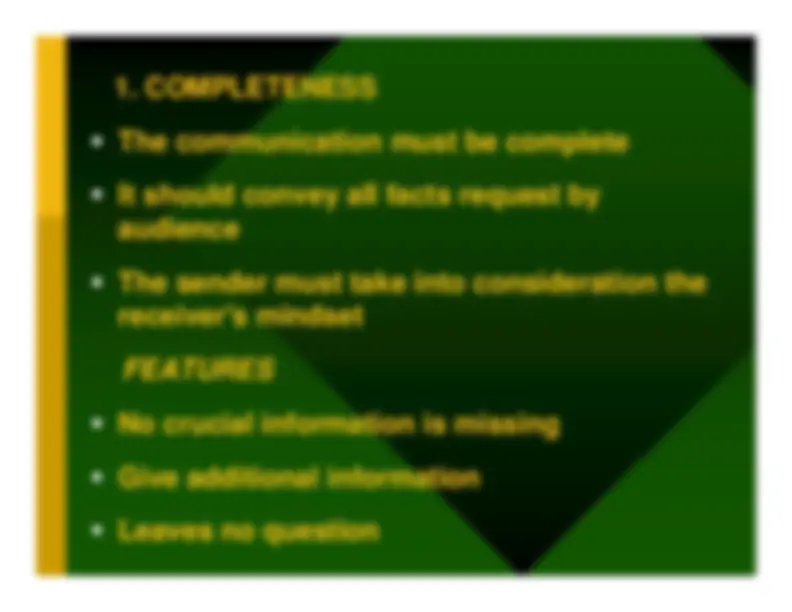
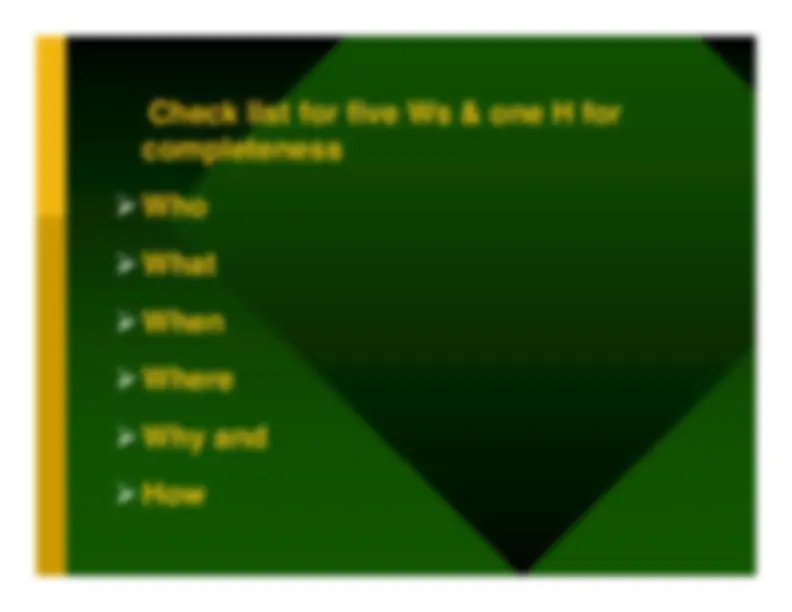
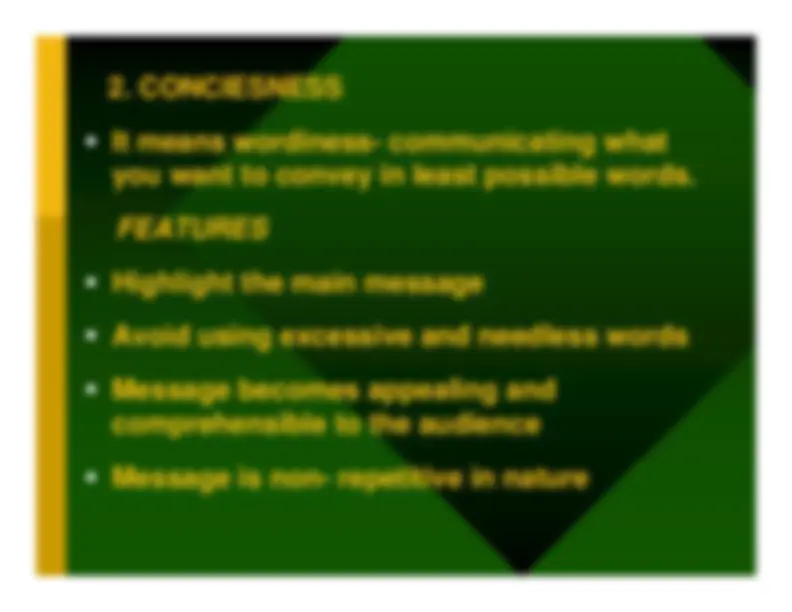
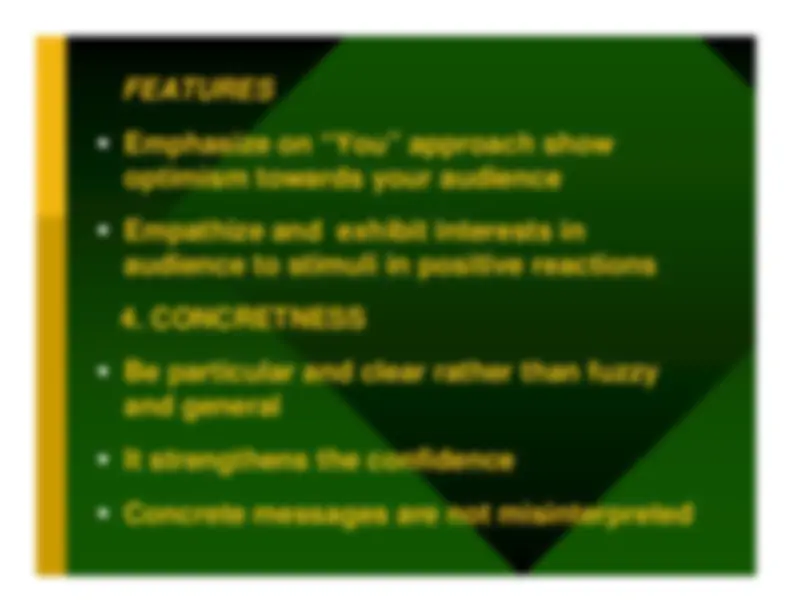

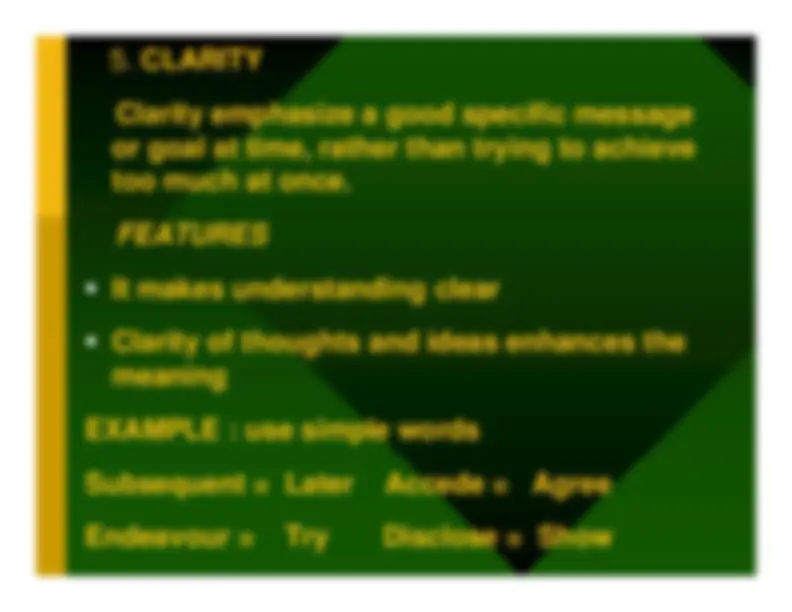

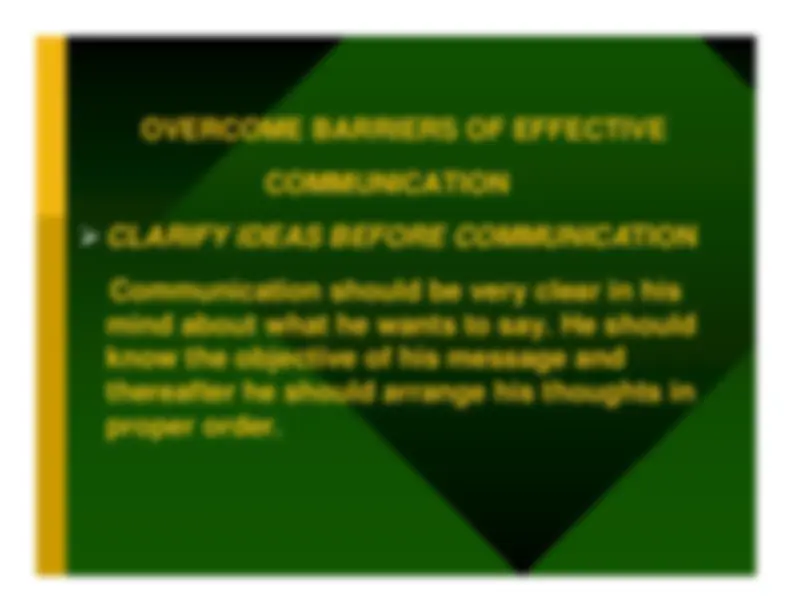
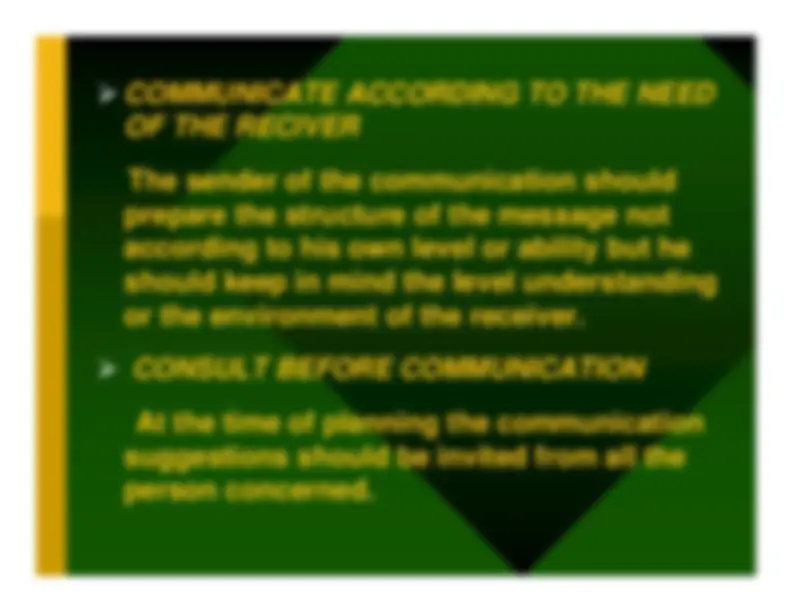
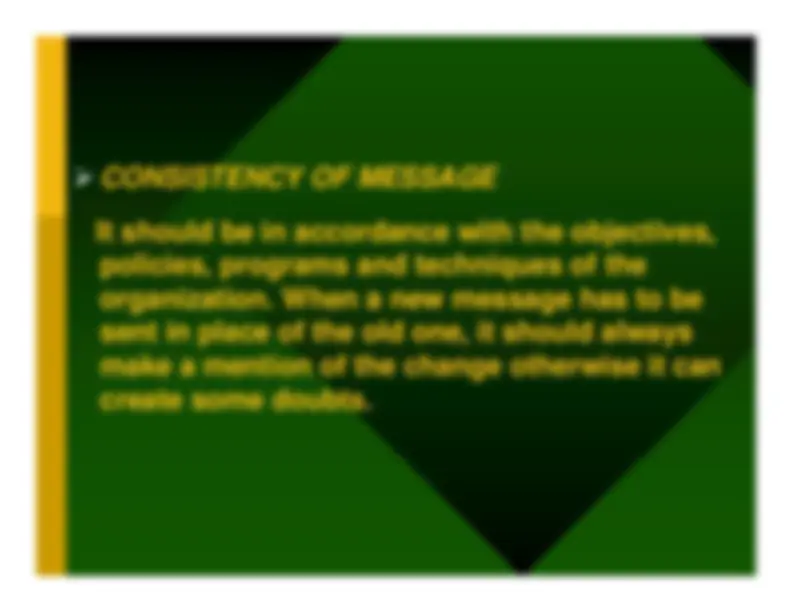
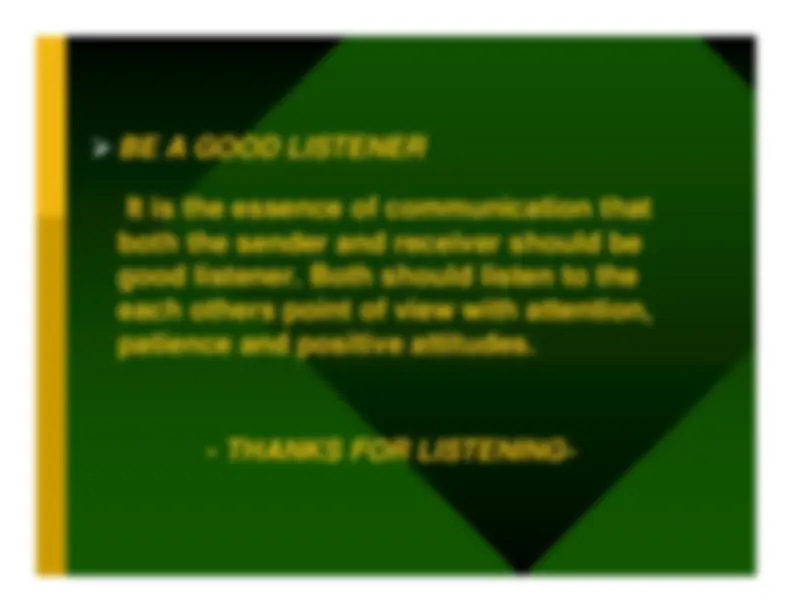


Study with the several resources on Docsity

Earn points by helping other students or get them with a premium plan


Prepare for your exams
Study with the several resources on Docsity

Earn points to download
Earn points by helping other students or get them with a premium plan
Community
Ask the community for help and clear up your study doubts
Discover the best universities in your country according to Docsity users
Free resources
Download our free guides on studying techniques, anxiety management strategies, and thesis advice from Docsity tutors
The seven principles, or 'Cs', of effective communication: Correctness, Clarity, Conciseness, Completeness, Consideration, Concreteness, and Courtesy. Each principle is explained in detail, along with features and examples to help you master the art of clear and respectful communication.
What you will learn
Typology: Study Guides, Projects, Research
1 / 19

This page cannot be seen from the preview
Don't miss anything!












7 Cs FOR EFFECTIVE COMMUNICATION
It means wordiness- communicating whatyou want to convey in least possible words.
Highlight the main message
Avoid using excessive and needless words
Message becomes appealing andcomprehensible to the audience
Message is non- repetitive in nature
Implies “Stepping into the shoes of others”
Take note of audience's view points ,background, mind-set, education level
Envisage your audience their requirement,
Envisage your audience their requirement, emotions and problems
Do not hurt self respect and emotions ofaudience
Modify your words to suit the audience'sneeds
Emphasize on “You” approach showoptimism towards your audience
Empathize and exhibit interests inaudience to stimuli in positive reactions
Be particular and clear rather than fuzzyand general
It strengthens the confidence
Concrete messages are not misinterpreted
Clarity emphasize a good specific message or goal at time, rather than trying to achievetoo much at once.
It makes understanding clear
Clarity of thoughts and ideas enhances themeaning
EXAMPLE : use simple wordsSubsequent = Later
Accede =
Agree
Endeavour =
Try
Disclose = Show
Shows sender’s expression and respect to
the receiver
The sender of the message should besincerely, polite, Judicious, reflection andenthusiasm
Taking into consideration both view pointsand feelings of the receiver
Courteous message is positive and focused atthe audience
Select the right level of language for
communication either formal or informal
Realize that formal language is most oftenused in business communication
Apply the principle of communication toyour writing
Communication should be very clear in hisCommunication should be very clear in his mind about what he wants to say. He shouldknow the objective of his message andthereafter he should arrange his thoughts inproper order.
Its main advantage will be that all those people
who are consulted at the time of preparing thecommunication plan will contribute to thesuccess of the communication system.
The sender should take care of the fact that the
message should be framed in clear andbeautiful language. The tone of the messageshould not ignore the feeling of the receiver.
The subject matter of the message should be
helpful to the receiver. The need and interactof the receiver should specially be kept inmind.
The purpose of feedback is to find out whether the receiver has properly understand themeaning of the information received.
It is the essence of communication that
both the sender and receiver should begood listener. Both should listen to the each others point of view with attention,each others point of view with attention, patience and positive attitudes.